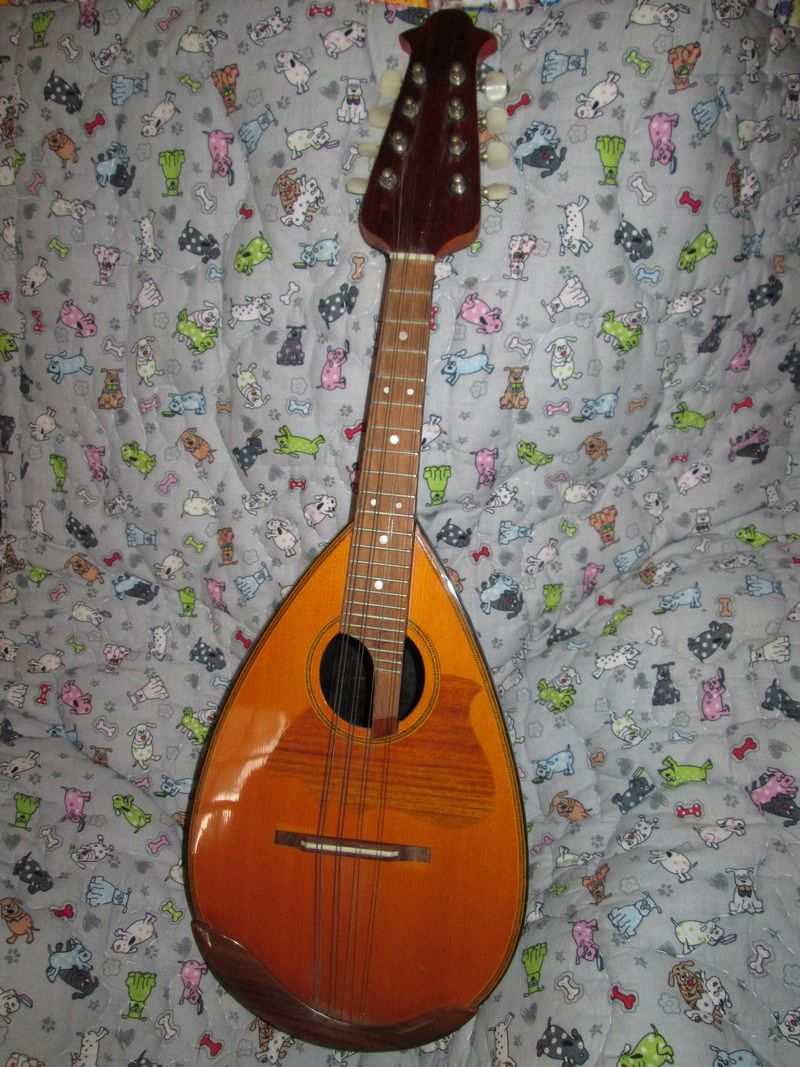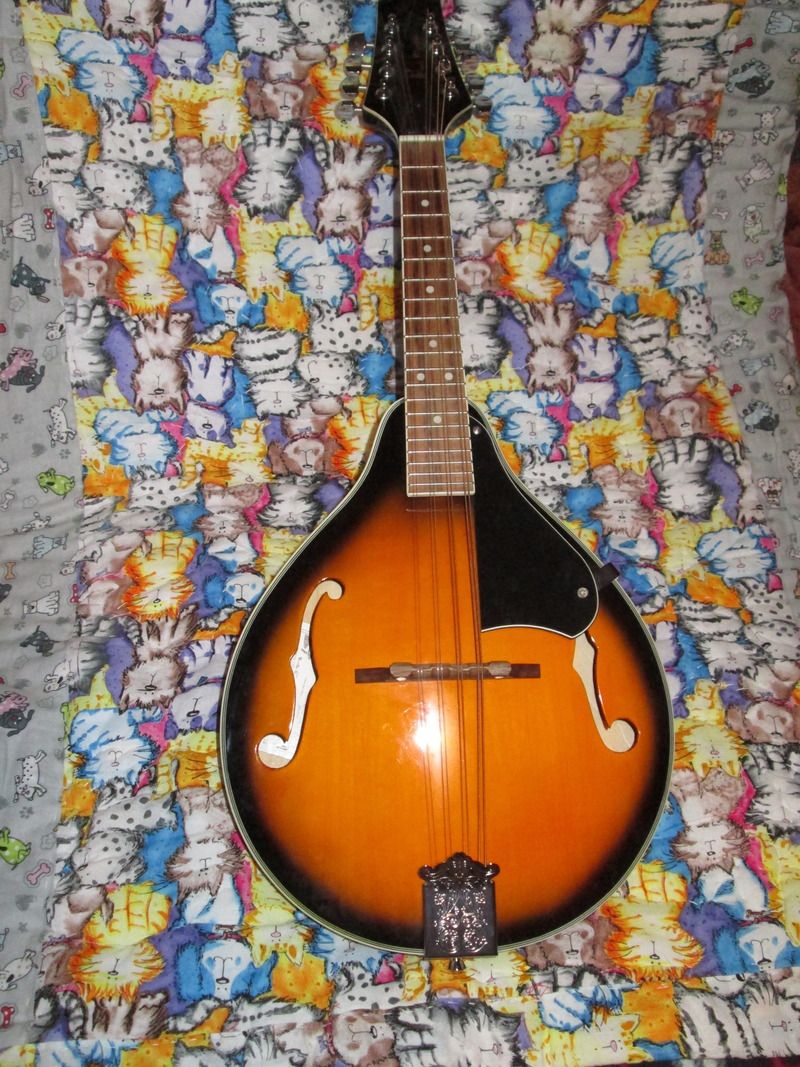My current favourite is Daisy ( a flat back A style with D hole), but she has a high action, my other two Mandolins (Belle (Blue grass A style round hole) and Marigold (Bowl Back) have low action strings. My theory is to learn on the high action strings as it builds up muscle etc in the hands, or am I wrong? Should I be learning on the easier instruments to play and then work up to the high action?
I'm not experienced enough to mess around with the bridge which is solid with no turn screws to lower the action.






 Reply With Quote
Reply With Quote







 but I do have a specific mandolin with high action -- it is detuned three 1/2-steps to a 'blues' tuning. Lowered tension makes the high action tolerable to my fingers (which have been playing mandolins off-and-on for 30 years).
but I do have a specific mandolin with high action -- it is detuned three 1/2-steps to a 'blues' tuning. Lowered tension makes the high action tolerable to my fingers (which have been playing mandolins off-and-on for 30 years).






Bookmarks